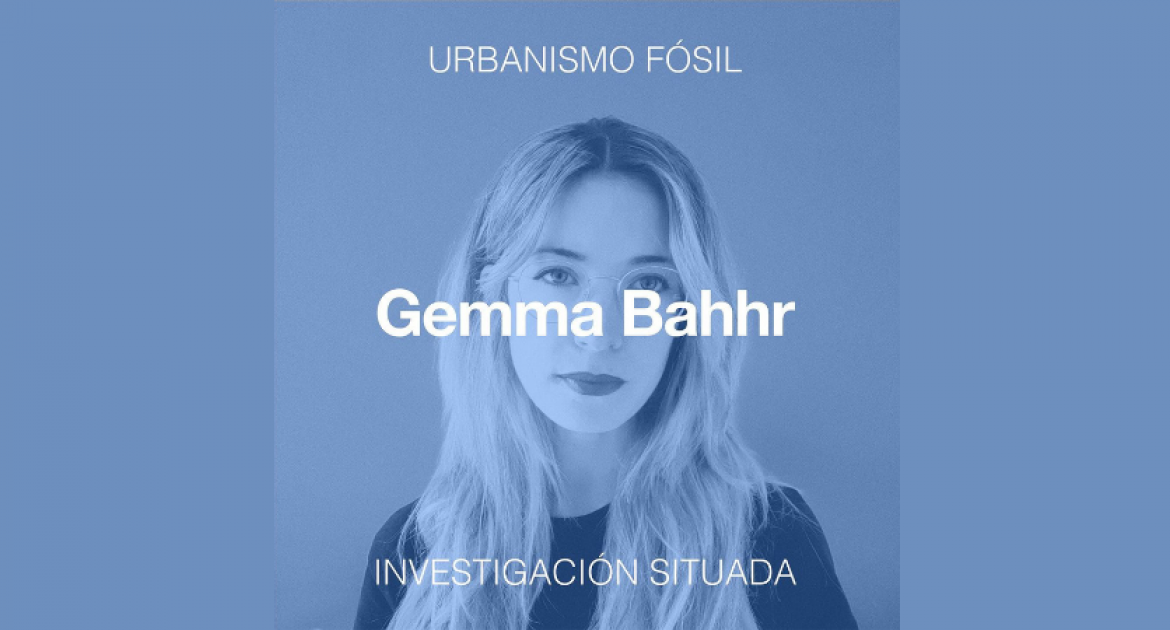Gemma Bahhr · Fossil Urbanism

Gemma Bahhr (pseudonym of Gemma Barricarte) is an architect, artist and researcher who explores, among other issues, the relationships between culture, politics and ecology in contemporary cultural and socio-ecosystemic transformation processes. Her research takes place through historical research, artistic creation, narrative and image (in a broad sense), problematising contemporary political nihilism and understanding radical imagination as a powerful lever for social change.
Proyect
Since the start of the Industrial Revolution in the 21st century, 1.5 trillion tonnes of CO2 eq have been emitted, 86% of which comes from burning fossil fuels. At present, concentrated CO2 levels in the atmosphere amount to about 420 ppm, spanning geological times of other eras. Pre-industrial levels of 280 ppm are still a long way off. The energy transition is one of the most contentious issues of our time in light of the important role of energy in the climate crisis and in our daily lives. But energy is not only a physical reality, it is also a historical and cultural construction. "Fossil Urbanism: metabolic hauntologies and new energy ecologies" will focus on the role played by social imaginaries in dialogue with their energy metabolism in the development of modern architecture and urbanism in Madrid. At the same time, it will explore new energy ecologies through speculation, the exploration of technologies such as artificial intelligence in dialogue with theoretical and historical research.
The concept of hauntology understands that what exists is based on absences, somehow present, that precede and envelop it: its past, its history, its processes, its spectra. Something similar happens if we think of the hyperaccumulative phenomenon of climate change and its relation to fossil fuels. Certain spectra or hauntological presences remain accumulated in the atmosphere in the form of CO2: from the first cotton manufacturer in Lancashire at the beginning of the 19th century who decided to give up his old waterwheel and invest in a steam engine to the development of the oil industry or the last particle of CO2 emitted by the combustion of natural gas. The atmosphere is inhabited by the spectres of fossil metabolism and, at the same time, all kinds of possible futures are projected onto it. Not only is our contemporary thinking a product of the history that precedes us, but also matter, the built environment or ecosystems virtually coexist with such spectra, the product of historical metabolisms. The research will be marked by a strong diachronic sensibility: it will seek to build bridges between the past and the future in order to respond to the imaginative needs of the present. Metabolic hauntology proposes a double archaeology of the urban and architectural image: past and future converge in it through presence and absence, and the task is to bring them into dialogue and activate them. This project is based on the conviction that one of the most radically transformative paths that contributes to recomposing the imagination and the principle of collective hope is, due to its implications, the decarbonisation of imaginaries and affections.



 Medialab-Matadero Madrid
Medialab-Matadero Madrid